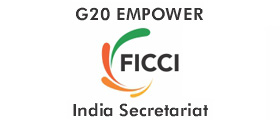“I am living my dream.”
Thirty-two-year-old Pallavi Hota sums up in one line, her journey from her humble beginnings to becoming a celebrated TV news anchor, to spearheading a women-only You Tube channel.
Raised by a single mother in the remote village of Balangir in western Odisha, she completed her graduation, enrolled for a diploma in journalism at the Indian Institute of Mass Communication (IIMC) in Dhenkanal, nearly 300 km from her native village. She then took up a job when she was about to turn 22. Before long, Pallavi went on to become a popular television news anchor. But dissatisfied with her work in the mainstream media, Pallavi quit and found a successful broadcast start-up, Paharaa, to tell stories of women’s courage and empowerment, grassroots leadership, and women changemakers, from her home town.
Paharaa’s stories focus on western Odisha, a relatively economically backward region. The stories are told in the local language - Sambalpuri Kosli, an Indo-Aryan language spoken in western Odisha and also alternatively known as western Odia. From covering the story of a women’s collective running a successful dairy operation, to chronicling the stories of women’s empowerment through the state’s Mission Shakti initiative and talking about the hitherto unexplored traditions and cultures of the hinterland, Paharaa is at the forefront of capturing the region through a gender lens.
“Paharaa is today as much a story, as the ordinary women and their extraordinary stories it tells,” says Pallavi, adding that their stories receive tens of thousands of page-views, likes and shares, especially from the hinterlands of the state.
Shot on smartphones mostly, Paharaa’s stories are compact five to ten minutes long videos, interspersed with folk tunes and crisp interviews.
Pallavi works with a very small and young team that comprise six reporters, who are stationed in six districts in western Odisha, five editors and around three camera operators, who work from the channel’s Bhubaneswar office.
“It is very difficult to work in male-dominated newsrooms these days,” Sagarika Pradhan, in her forties, and perhaps the senior-most editor in the group, with nearly 15 years in industry, says.
“Paharaa is refreshingly different – this is our own space where we every day choose to tell stories of women changemakers.”
The rest of the team is comparatively young. Harshita Jena is 21. She completed her diploma in film and video editing from an institute in Cuttack, she says. “This is my first job and I am so glad for it,” she says. “I know I am doing something that matters.”
Chandrakanti Mundari, 23, is the lead editor. “I want to start making my own documentaries soon,” she says.
Slowly but surely, Paharaa is changing the perception of women’s primary role as caregivers and portraying them as entrepreneurs, workers and leaders.
“We are telling our own stories through the stories of so many other women,” Pallavi says. “These stories are writing a new narrative – slowly but surely.”
 |
 |
 |
These stories of women-led development have been compiled by UN Women India. All copyrights to the stories and images are held by UN Women India Country Office dated December 2022. |

